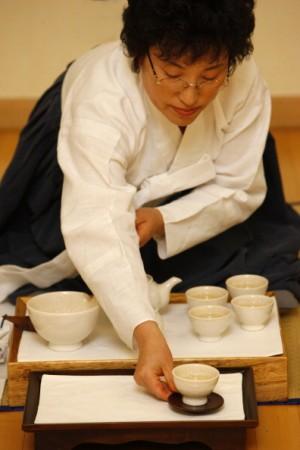
The humble tea has evolved over time to become one of the most popular drinks worldwide owing to its innumerable health benefits. Referred to as "Cha" in Korean, the beverage was introduced to Korea from China around the 7th century by Buddhist monks and scholars. Korean tea, unlike the popular Chinese or Japanese teas, has a distinctive flavour placing it above all.
Korean green tea is roasted for hours on an iron pot to retain its flavour, hand rolled and dried in the shade to seal the aroma. This essential process allows the dried tea leaves to diffuse mild colour and flavour. There are numerous grades of Korean tea to choose from in Korea. Some of the famous grades are Daejak, Jungjak, Sejak and Ujeon.
Daejak forms the most widely used tea variety by experienced tea drinkers as they are very strong and releases distinct flavours. Jungjak is the second most common grade with the leaves being slightly bigger and retains freshness even after repeated usage. Sejak is made of tender leaf buds favoured during traditional ceremonies for its mild flavour and scent. The last and most popular Ujeon grade literally translates to "best herbal green tea obtained before the rain" in Korean. This makes Ujeon grade rare and expensive with a brew life of up to four infusions.
To brew a good cup of tea has few prerequisites; from the quality of tea to the time allowed to infuse the leaves yielding a perfect cup of tea. The "Dado" ceremony consists of meticulously checking the temperature and the method of pouring a cup of tea. The primary focus of Dado is to relish the flavour of tea in a cosy, natural setting.
To prepare for Dado in the formal Korean way, a tea set consisting of teapot, small tea cups and a large bowl to cool the water to the desired temperature is mandatory. The right amount of dried tea leaves are placed in the pot and hot water is gradually poured into the bowl. The tea leaves are allowed to brew for no more than 3-4 minutes. Korean green tea is usually enjoyed by holding the cup in both hands. First-time tea tasters are encouraged to observe the colour of the tea and inhale the refreshing fragrance followed by guiding the taste through the taste buds and finally relishing the aftertaste.
Dado, or the Korean way of tea, is a means to meditate and cleanse the drinkers' mind of daily woes and enjoy the simple pleasures of life. Dado is best enjoyed by sitting on the floor; the Korean way and letting the mind wander in the complete Korean tea experience.

















